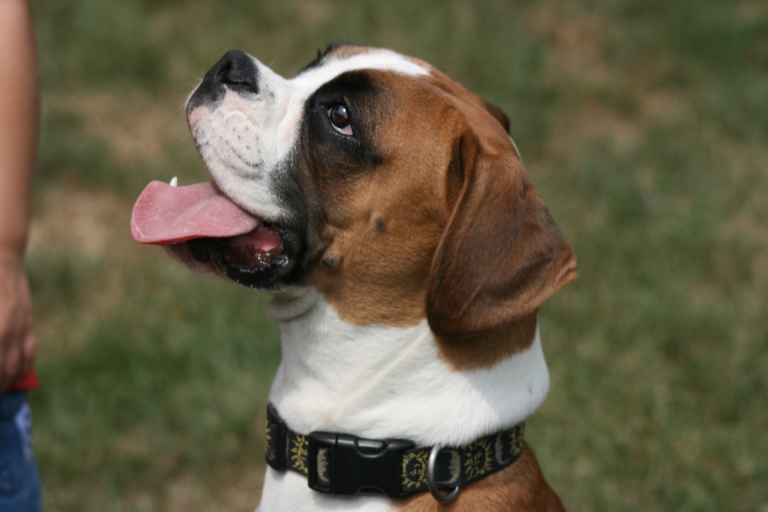So you’ve just added a new dog to your family, either as a foster or as an adopted dog. You’re so excited to have them, and you want to make them happy and comfortable, as quickly as possible. So you take them out in public, invite people over to see them, and let them roam the house with the rest of your dogs and children, right? While you have the best of intentions, this can be a recipe for disaster. We want all of our new dogs to feel safe and loved, but as humans, we don’t always go about this in the best way.
When a new dog comes into your house, it’s like they’ve been dropped in the middle of a busy city in a foreign country, where they don’t speak the language. Even adult dogs are back to a puppy-like mind, where everything is new and stressful. They don’t know where they are, what to expect, what the rules are, or even how to ask where the bathroom is. When dogs feel overwhelmed and exhausted, they’re likely to act out or misbehave. Our job is to help them settle in and feel comfortable, so that we set them up for success and not failure. CBR, along with other dog rescues and shelters, recommend a slow introduction and decompression process. This process allows the dog to acclimate to their new environment with the least stress as possible, so that they will not end up making mistakes that would cause them to get in trouble or be moved to a new home.
Steps to Decompression- some dogs only need 3-5 days, while others will need 2+ weeks
-
When a dog first arrives at your house, give them space- their own room or a gated off area where they can see/hear the household, but where other pets and children can’t approach them. For some dogs, a room where they can’t see/hear the household is best at first.
-
Give them a crate in their quiet area to help them feel safe. Take them out of the crate for short periods of time (20-40 minutes), then put them back in their crate- this gives them time to take in the new environment, then rest and absorb and accept all things “new”.
-
Exercise them by themselves, but only in your yard- no long walks or outings.
-
Keep them on a leash in the house, so that you can monitor their behavior (this will also help with house training).
-
Ignore bad behavior- ignore crying/barking- you don’t want them to learn that this behavior gives them attention. The dog needs to learn to be secure when you’re not there. Use the leash to correct jumping, counter surfing, etc.
-
Praise gently- speak softly to them, but go slowly and let them initiate contact- even petting can be stressful for some dogs in a new home.
-
After the dog has shown that they are not stressed and are settling, you can start slow introductions to other pets in your home and any “little people”- again, go slow, and follow the dogs’ cues. Start off on neutral territory with both dogs on leashes, then move to the yard, and then the house. Monitor interactions and back up and go more slowly if the dogs are showing any signs that they are uncomfortable. Your children may be eager and excited to give the new dog lots of love and hugs- make sure to teach them to go slowly and give the dog their space- dogs have very few ways to show that they are not comfortable in a situation, and you don’t want your child in the way when they share how they are feeling.
-
Dogs cue off of human nonverbal signals, so the calmer you are when bringing a new dog in, the easier it will be to help them acclimate to your home.
By decompressing your foster or adopted dog and going slowly with introductions, you will have a happy and relaxed dog in no time!

